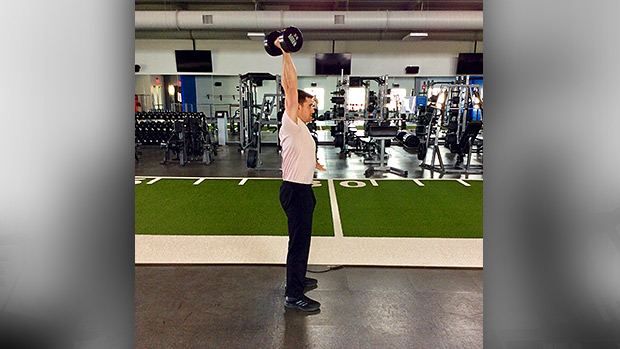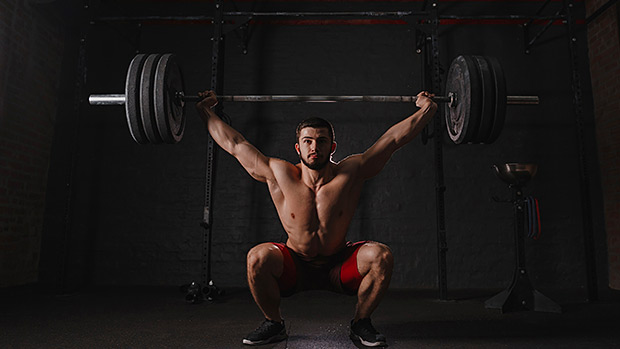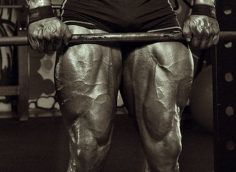The ability to lift something heavy and stabilize it overhead is something few people can do. Overhead lifts require more than just brute strength and good technique. To be able to execute them successfully, they also require a significant amount of mobility and body awareness.
Overhead exercises are where the "stronger" person can be out-lifted by a "weaker" person due to mobility restrictions. Check out these photos:

BAD DUMBBELL OVERHEAD HOLD

GOOD DUMBBELL OVERHEAD HOLD

BAD OVERHEAD SQUAT

GOOD OVERHEAD SQUAT
If you look at where the weight is in relation to my center of gravity, you'll see that my shoulders will give out very quickly in the "bad" photos, but I can hold the positions in the "good" photos for a much longer period of time.
If you have poor mobility overhead, it most likely means your lats are "gluing" your arms to your sides, your pecs are locked down so your shoulders roll forward, and your traps are so tight/overactive they make scapular movement nearly impossible.
If you want to be able to lift more weight overhead, you have to stop your body from fighting against you.
Here's What To Do
Most of us can't spend all day in the gym. You have to choose exercises that'll limber you up quickly so you can get more lifting in. Below are some of my favorite mobility exercises to prep the body for overhead lifting.
Cat/Cow
This yoga movement is excellent for opening up the mid back and getting your shoulder blades to move properly.
Each time you inhale, retract your shoulder blades and look up to stretch the abdomen. Each time you exhale, protract your shoulders by pressing your palms into the floor, rounding your upper back, and tucking your chin to your chest.
This will create some "space" in your body and allow you to feel how your shoulder blades should articulate around your ribcage when protracting and retracting the shoulders.
Shoulder Reach-Through
Shoulder reach-throughs are a great rotational exercise to open up the thoracic spine. When reaching your arm back, be sure to externally rotate your shoulder so that you can move freely without feeling a painful pinch.
As you reach your arm through, you can tuck your chin to your chest and roll on top of your trap so that your shoulder depresses and you get more of a stretch in your mid back.
Banded Pec Stretch
This is a great way to open up the pecs so that your shoulders aren't so rounded. Use a light band so that you can focus on internally and externally rotating the shoulder.
Doing this will help open up your shoulder capsule, allowing you to better receive weight in an overhead position.
Two-Way Banded Lat Stretch
The first stretch for this movement requires your arm to go behind your head so you can open up through the side of the body. Adding some movement in the upper body, or slightly bending your elbow, will allow you to deepen this stretch.
The second stretch requires you to sit your hips back and face the band. Internally and externally rotating the shoulder will allow you to hit the lats from a variety of different angles. Continue to move your body around to feel where you have the most restrictions.
Banded Trap Stretch
Overactive traps will pull your shoulders off your ears and give you a nice feel-good stretch through the traps and neck.
Hold a band with both arms and step in the middle of it. Internally and externally rotate your shoulders and focus on feeling your shoulder blades move around the ribcage. To prepare your shoulders for heavy lifting, slightly raise the arms when externally rotating the shoulders. This will put more stress across your anterior delts.





